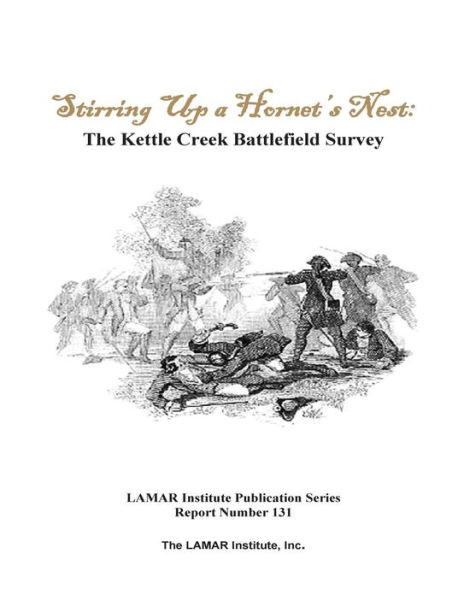Categorized in American Revolution, Archaeology, Genealogy, Battlefield Archaeology American Revolution, Archaeology, Battlefield Archaeology, Georgia, Loyalist, Loyalists and Revolutionary War. Evidence from the 2008 historical archeology study of the Kettle Creek battlefield in Wilkes County, Georgia shows "footprints" where the battle of Kettle Creek (February 14, 1779) took place. This is not just an archeological study about the Battle of Kettle Creek February 14, 1779, but it identifies those patriots who served there and identifies loyalist as well. This study sets the stage for the development of the Kettle Creek Battlefield Park. . This project was funded by the Preserve America grant program of the U.S. Department of the Interior, National Park Service. The City of Washington, Georgia received this grant in the 2007 grant cycle and, after a competitive bidding process, The LAMAR Institute was retained to perform the work. The project began in February, 2008 was completed in December, 2008.
Recognized as one of the most significant battles in Georgia during the American Revolution, the battle of Kettle Creek took place on Sunday morning, February 14, 1779. The battle, which began about 10 A.M., lasted no more than four hours. By 2 P.M. those Loyalist Volunteer militia who were not killed, captured or wounded had fled the scene of the battlefield. The Patriots gathered up their wounded, assessed their booty left in haste by the Loyalists, and prepared to continue their march. The Patriots lingered for several hours, at least as long as it took Colonel John Boyd to expire from his wounds, and then they moved out from the scene of the battlefield. Several Loyalist prisoners, who were captured by the Patriots in the battle, were left behind as a burial crew. In exchange for burying the battlefield dead, these men were to report to Colonel Andrew Pickens, where they were to receive their parole, and then return to their homes in the Carolinas.
In February 2008 a team of historical archeologists returned to the Kettle Creek battlefield to conduct a "forensic" investigation, 229 years later. The team gathered historical documents and original testimony about the battle, located battlefield clues including artifacts and various aspects of the battlefield landscape, analyzed various battle scenarios presented by previous sleuths, and prepared this report of summary findings. The battle of Kettle Creek was without a doubt a cold case file. A comprehensive research approach, termed "Battlefield Archeology", was the strategy used to solve this case. This systematic study used the battle evidence to create an improved interpretation of what happened at Kettle Creek. As a result we now have firmly established landmarks associated with the battle and physical evidence of the battle. Together, this battle landscape and the information derived from the tangible remains allows for an improved story of a very important event in American history.



